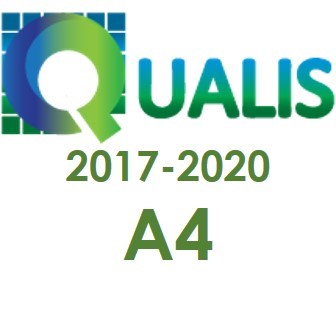Influência de diferentes gaps nos resultados obtidos em ensaios do Dynamic Shear Rheometer com ligante asfalto-borracha
Palavras-chave:
Asfalto Borracha. Gaps. Parâmetros ReológicosResumo
O principal equipamento para caracterização do ligante asfáltico é o Reômetro de Cisalhamento Dinâmico – (DSR). Este equipamento possui dois pratos cuja distância é conhecida como gap. O objetivo desta pesquisa é avaliar o impacto de três diferentes gaps nos parâmetros reológicos (Módulo Dinâmico de Cisalhamento e do Ângulo de Fase) em dois ligantes asfálticos modificados por borracha. As amostras foram ensaiadas em cinco temperaturas e a frequência de 10 rad/s. Portanto, os resultados encontrados não apontaram uma diferença significativa entre os três gaps testados.
Downloads
Referências
AMERICAN SOCIETY FOR TESTING AND MATERIALS. Standard specification for
asphalt-rubber binder. D 6114-97.In: ASTM .Annual Book of ASTM Standards,
Philadelphia, v 4.03, p.659-661, 1997.
AASHTO M 332. Standard Specification for Performance-Graded Asphalt Binder Using Multiple Stress Creep Recovery (MSCR) Test. American Association of State Highway and Transportation Officials, Washington, DC, 2019.
BABADOPULOS, L. F. A. L. A contribution to couple aging to hot mix asphalt (HMA) mechanical characterization under load-induced damage. M.Sc. Thesis, Programa de Pós Graduação em Engenharia de Transportes, Centro de Tecnologia, Universidade Federal do Ceará, Fortaleza, Brazil, 2014.
BAHIA, H. U., & Davies, R. Effect of Crumb Rubber Modifiers (CRM) on Performance-Related Properties of Asphalt Binders. P. 414–438, 1991.
BENNERT, T. Grade Determination of Crumb Rubber-Modified Performance Graded Asphalt Binder. Center for Advanced Infrastructure and Transportation, 2013.
CHRISTENSEN, R. M. Theory of Viscoelasticity. Dover Publications, Inc, 1nd Ed. New York, USA, 364 pgs ,1982.
CURY, M. V. Q. et al. Análise socioeconômica e ambiental para o uso de asfalto emborrachado na construção de rodovias. In: SIMPÓSIO BRASILEIRO SOBRE ESTRADAS E A INTERFACE AMBIENTAL. 2002. Foz do Iguaçu. Anais… Foz do Iguaçu: SESINAM. p. 1-12, 2002.
DI BENEDETTO, H.; CORTÉ, J. F. Matériaux routiers. Tome 2. 283p. 2005.
DEPARTAMENTO NACIONAL DE INFRA-ESTRUTURA DE TRANSPORTE - DNIT 031/2006 - ES Pavimentos flexíveis - Concreto asfáltico -Especificação de serviço. Rio de Janeiro, 2006.
DEPARTAMENTO NACIONAL DE INFRA-ESTRUTURA DE TRANSPORTE - DNIT – EM 111/2009: Pavimentação flexível - Cimento asfáltico modificado por borracha de pneus inservíveis pelo processo via úmida, do tipo “Terminal Blending” - Especificação de material, Rio de Janeiro, 2009.
EL BEZE, L. Recyclage à chaud des agregats d'enrobes bitumineux: Identification de Traceurs D'Homogénéité du Melangé Entre Bitume Vieilli et Bitume Neuf d'Apport". Thèse, 318, 2008.
FAXINA, A. L. Estudo em laboratório do desempenho de concreto asfáltico usinado a quente empregando ligante do tipo asfalto-borracha. 2002.338p. Dissertação (Mestrado em Transportes) Escola de Engenharia de São Carlos- EESC. Universidade de São Paulo. São Carlos.
FHWA Crumb Rubber Modifier – Design Procedures and Construction Practices. Workshop Notes. U.S. Department of Transportation. Federal Highway Administration. Publication N° FHWA-SA-93-011, 1993.
HUANG, Y.H., “Pavement Analysis and Design.” 2nd edition. Prentice-Hall, Englewood Cliffs. 2004.
KANDHAL, P. S. Moisture susceptibility of HMA mixes: identification of the problem and recommended solution. NCAT - National Center for Asphalt Technology. Auburn, report n.92-6. 1992.
MAHMOUDI, Y. et al. Tridimensional linear viscoelastic properties of bituminous mixtures produced with crumb rubber added by dry process, Road Materials and Pavement Design, 2020.
NAVARRO, F. J et al. Rheological characteristics of ground tire rubber-modified bitumens. Chemical Engineering Journal, 89(1–3), 53–61, 2002.
ODA, S.; FERNANDES JUNIOR, J. L. Resultados da avaliação de asfalto-borracha através de ensaios tradicionais e de ensaios da especificação Superpave. In: XIV CONGRESSO DE PESQUISA E ENSINO EM TRANSPORTES. Gramado. Anais. p.577-589. 2000.
PINHEIRO, J. H. M. Incorporação de borracha de pneu em misturas asfálticas de diferentes granulometrias (processo úmido seco), Dissertação de Mestrado em Transportes, Universidade Federal do Ceará, CE, Brasil, 2004.
ROCHLANI, M. et al. Investigating the performance-related properties of crumb rubber modified bitumen using rheology-based tests, International Journal of Pavement Engineering, 2020
SOARES, R. A.; ASSIS, E. M. O uso da Borracha de Pneus na Pavimentação como uma Alternativa Ecologicamente Viável. 2008. 15 p. Universidade Católica de Salvador, Salvador, BA, 2008.
SOUSA, J.M.D. et al. Caracterização laboratorial preliminar de misturas asfálticas modifica com borracha reciclada de pneus e convencional para projetos de recuperação de rodovias do DER/DF. In: REUNIÃO ANUAL DE
PAVIMENTAÇÃO, 32. Brasília. 2000. Anais. Brasília, Associação Brasileira de Pavimentação. V1, p. 224-234, 2000.
SPECHT, L. P., et al. Utilização de Borracha Reciclada como Agregado de Concreto Asfáltico: Avaliação Laboratorial, XVI Encontro de Asfalto, IBP, Rio de Janeiro, 2002.
SPECHT, L. P.; BABADOPULOS, L. F. A.; BENEDETTO, H.; SAUZEAT, C.; SOARES, J. B. Application of the theory of viscoelasticity to evaluate the resilient modulus test in asphalt mixes. CONSTRUCTION AND BUILDING MATERIALS, v. 149, p. 648-658, 2017.
READ, J., WHIEOAK, D. The Shell Bitumen Handbook. Fifth Edition, 2003.
Arquivos adicionais
Publicado
Como Citar
Edição
Seção
Licença
Copyright (c) 2021 Revista Brasileira de Iniciação Científica

Este trabalho está licenciado sob uma licença Creative Commons Attribution-NonCommercial-NoDerivatives 4.0 International License.




